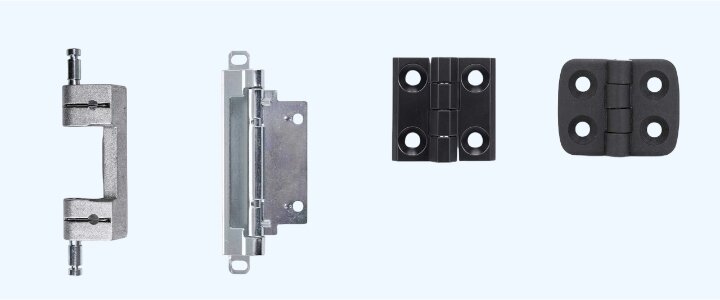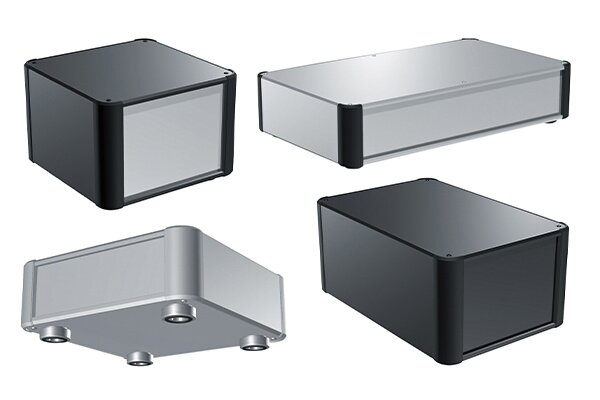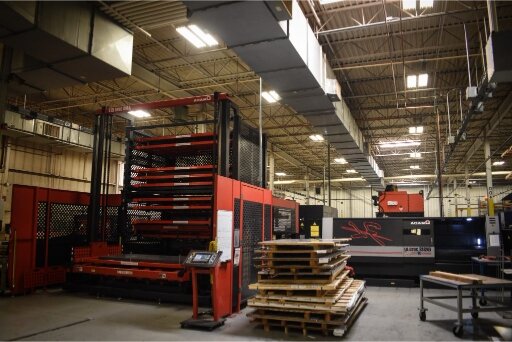Sheet-metal enclosures protect essential electronics. However, they can also trap heat. When heat builds up with nowhere to go, the internal temperature can rise rapidly. This rise can cause throttling, sudden resets, or shorter component life. Many engineers follow a simple rule: every extra 10°C can cut the life of a component in half.
This is why ventilation is a key part of enclosure design. It is not a cosmetic choice. Effective airflow planning helps maintain steady temperatures. It also supports stable performance and longer service life. In many cases, it even improves safety for the entire system.
This guide explains practical methods for adding ventilation to sheet-metal enclosures. Each method has been proven in real-world projects. These ideas enable engineers to design cost-effective and straightforward airflow paths for industrial, commercial, and outdoor applications.

Why is Ventilation Crucial in Sheet Metal Enclosures?
When you design a sheet metal enclosure, you often focus on size, mounting, and surface finish. Ventilation, however, is just as important. Electronic parts generate heat, and that heat requires a clear path to escape the enclosure. Solid metal alone cannot manage it.
Heat buildup may seem slow, but its impact becomes apparent quickly. A 20–30 W device inside a sealed box can raise the internal temperature by 15–25 °C. This kind of rise can shorten component life, lower performance, or even cause a shutdown. Good ventilation keeps temperatures stable. It also reduces failure rates and supports safer long-term use.
Passive Ventilation Options
Passive airflow relies on the natural movement of air, rather than the use of fans. It works well when heat loads are moderate and installation conditions are stable. Below are three standard passive methods.
Cutouts – Holes, Slots, and Custom Patterns
Cutouts give air a simple way to move in and out of the enclosure. You can use round holes, long slots, or custom shapes. Each option offers its own benefits, but their performance can vary.
What works well:
- Slots near the bottom help cool air enter and let warm air rise and exit.
- Uniform patterns ensure predictable and straightforward production.
- Avoid very dense clusters of tiny holes in thin metal, as they can cause warping.
Manufacturing advice:
- Set the minimum hole diameter to approximately 1.2 times the sheet thickness.
- Keep the metal between holes at least 1× the thickness.
- Avoid placing holes near bend lines. Aim for a distance of at least 2× the thickness.
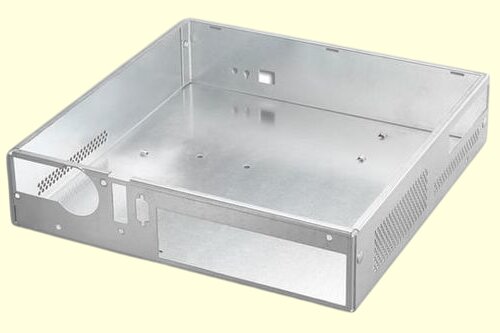
Louvers and Labyrinth Vents
In outdoor or dusty locations, open holes may not give enough protection. Żaluzje solve this by using angled blades that block direct entry of dust or rain while still allowing airflow.
Key placement tips:
- For outdoor enclosures, aim louvers downward or place them on the sides. Avoid top-facing vents.
- Match the blade angle to real installation conditions.
- Expect airflow to drop by 15–30% compared with open cutouts, so plan your vent area with that in mind.
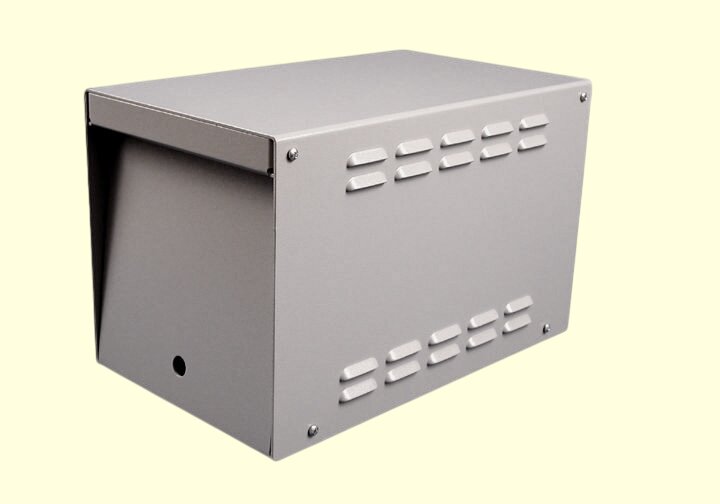
Perforated Panels for High-Flow Areas
Perforated metal is ideal when you require strong airflow while maintaining good strength and a clean appearance. These panels use regular hole patterns and can replace an entire flat panel or be added as inserts.
What to note:
- Common open-area ratios range from 20% to 40%.
- Thicker sheets stay rigid and resist bending or warping.
- If you farba proszkowa Lub anodować the panel, confirm that the coating does not affect the hole shape.
- Costs are often lower than laser-cutting many small holes, especially on large surfaces.
Example use-case:
An instrument enclosure once used only 6% open area for venting. After switching to a perforated panel with an open area of approximately 28%, internal temperatures dropped by 12–18 °C. No fan was needed.
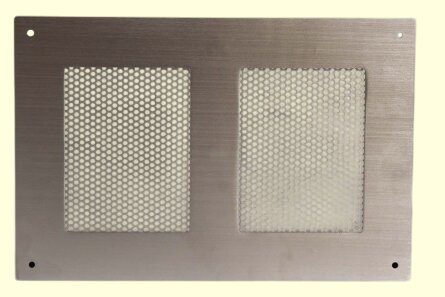
Active Ventilation Options
Passive airflow is adequate for moderate heat, but it becomes less effective as power levels increase or components are placed close together. In these cases, natural convection cannot remove heat fast enough. Active cooling utilizes fans or blowers to circulate air through the enclosure, providing steady and predictable temperature control.
Active ventilation helps when:
- Heat load is above 25–30 W in a tight space
- Several heat sources sit in the same area
- Air must move through small gaps or channels
- The environment is warm or has limited airflow
- You need to keep the internal temperature within a set range
Below are practical ways to incorporate active cooling and maintain stable thermal performance.
Fan Selection and Airflow Performance
Choosing a fan involves more than selecting a size or considering the rated CFM. Real airflow depends on resistance inside the enclosure.
Understanding CFM and Temperature Rise
A simple way to estimate airflow is:
CFM Required ≈ Heat Load (W) ÷ (1.2 × Allowable Temperature Rise °C)
For example, a 60 W load with a 15 °C rise limit needs about 3.3 CFM in free air. Once vents, filters, louvers, or tight internal spaces add resistance, the airflow drops. A safety margin of 30–80% helps ensure performance in real use.
Static Pressure Matters
Systems with restricted vents, perforated panels, or internal obstacles need fans with higher static pressure.
- Axial fans move a lot of air but struggle to handle resistance effectively.
- Blowers maintain strong airflow even with restrictions and work well with ducts or filters.
- Tangential fans spread airflow evenly across long PCBs or chassis surfaces.
The right fan type ensures air reaches hot components instead of escaping through the nearest opening.
Proper Fan Placement
Fan placement often has a greater impact on cooling than the fan model itself.
General guidelines:
- Place intake low and exhaust high to support natural convection.
- Keep intake and exhaust as far apart as possible to avoid airflow short-circuiting.
- Avoid mounting fans directly against solid panels.
- Maintain 25–40 mm of clearance at the fan inlet.
Common mistakes:
- Intake and exhaust on the same side
- Fans blowing into corners with no exit path
- Fans placed too close to high-resistance louvers
- Cable bundles blocking the fan inlet or outlet
Using Airflow Ducts and Guides
Fans alone cannot guarantee that air moves over the parts that need it most. Internal ducts or guides help shape the airflow path.
Why ducting helps:
Air seeks the path of least resistance. Without guidance, airflow often:
- Leaves the enclosure through the nearest vent
- Moves around hot components instead of across them
- Creates stagnant warm zones on the far side of the enclosure
Simple ducts can:
- Force air across heatsinks
- Separate hot and cool zones
- Prevent bypass airflow
- Improve cooling without higher fan speeds
Przykład:
A small CPU board reached 80 °C even with a fan. Air escaped sideways instead of crossing the heatsink. Adding a small sheet-metal duct pushed air through the fins and lowered the temperature to about 62 °C.
Designing a Clear Airflow Path
Airflow works best when it follows a simple, direct route. Select the preferred direction as early as possible in the design process.
Common airflow patterns:
- Front-to-back: Good for rack or chassis equipment
- Bottom-to-top: Works well for natural convection and wall-mounted boxes
- Side-to-side: Suitable when front or back openings are blocked
For any pattern, make sure:
- Cool air reaches all primary heat sources
- Hot air exits at the highest possible point
- Cables, brackets, and shields do not block flow
Before and after example:
- Before: Intake and exhaust both on the left → airflow loop, hot spot remained
- After: Intake on left, guided air across PCBs, exhaust on proper → temperatures dropped 11–17 °C
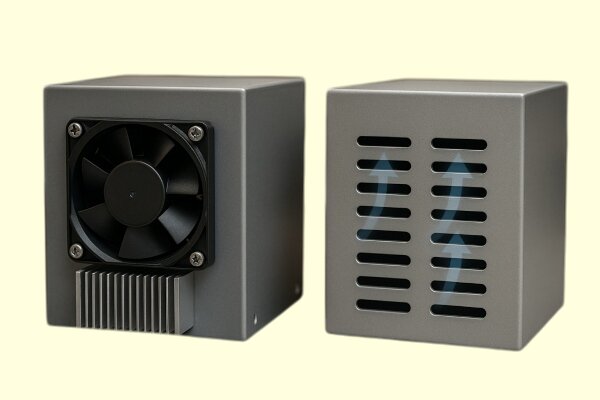
DFM Guidelines for Ventilation Features
Once you have chosen a ventilation method, the next step is to ensure it can be manufactured easily. Good DFM keeps panels flat, reduces cutting time, and helps control cost.
Managing Hole and Slot Density
Laser-cut patterns look clean, but dense groups of holes can cause heat distortion. The metal heats up during cutting, and thin sections become more likely to warp. The following guidelines help avoid these issues:
- Maintain a minimum hole diameter of approximately 1.2 times the sheet thickness.
- Maintain metal between holes at least 1× the thickness.
- Stay 2–3× the thickness away from any bend line.
- Avoid open-area ratios above 45–55% on thin materials.
- Break large vent areas into smaller zones to reduce heat buildup during cutting.
These rules maintain the panel’s strength and flatness, especially when using thin aluminum or thin-gauge steel.
Considerations for Formed Louvers
Louvers require a punch-and-form process, so spacing and shape are essential. Poor design can lead to inconsistent forming or weakened areas.
- Louver length should be at least 20–25 mm for stable forming.
- A blade angle between 30 ° and 55° provides reliable airflow.
- Maintain a spacing of at least 1.5 times the material thickness between louvers.
- Avoid placing louvers near bends or corners.
Louvers naturally stiffen a panel, but too many in the same area can create uneven stress. Add reinforcement if the panel begins to flex.
Integrating Perforated Panels
Perforated sheet works well for large airflow sections, but it needs proper support to stay rigid and flat.
- Keep at least 8–12 mm of solid edge for mounting.
- Avoid placing fasteners in perforated areas.
- Add flanges or return bends to reduce “oil canning.”
- Make sure finishing processes do not clog small holes.
Perforated panels allow strong and even airflow, and they reduce cutting time when vent regions cover a large area.
Material Behavior and Its Impact on Ventilation
Different materials handle heat differently. The choice of material affects heat spreading, panel stiffness, and vent geometry.
Różnice w przewodności cieplnej
Some metals move heat quickly; others trap it.
| Materiał | Thermal Conductivity (W/m·K) | Effect in Enclosures |
|---|---|---|
| Aluminium | ~205 | Spreads heat well; reduces hot spots |
| Łagodna stal | ~50 | Average performance; needs airflow |
| Stal nierdzewna | ~16 | Holds heat; requires more vent area |
| Zinc/Coated Steel | ~90 | Balanced performance |
If you use stainless steel for its corrosion resistance, remember that it requires better ventilation because it doesn’t conduct heat outward efficiently.
Influence of Surface Finish
Surface coatings and colors alter the amount of heat the enclosure radiates.
- Black powder coat improves heat radiation
- Matte finishes radiate heat better than glossy ones
- Anodyzowane aluminium spreads heat effectively across large surfaces
These effects are not a replacement for ventilation, but they can help reduce hot spots.
Uwagi dotyczące grubości materiału
Material thickness affects the manufacturability of vents.
- Thin sheets (≤1 mm): more prone to warping; avoid high-density patterns
- Medium sheets (1–1.5 mm): good balance for slots and vents
- Thick sheets (≥1.5 mm): support more aggressive vent patterns and deeper louvers
Selecting the correct thickness ensures the part remains flat and enhances overall cooling efficiency.
Application-Based Ventilation Strategies
Different enclosure types need different airflow patterns. Each application has its own heat sources, layout limits, and environmental challenges. The following guidelines help match ventilation design to real operating conditions.
Server and Computing Enclosures
These systems generate steady and concentrated heat. They need firm and consistent airflow.
- Use front-to-back airflow whenever possible.
- Place high-flow vents at both the intake and exhaust.
- Separate airflow zones for CPU/GPU and the power supply.
- Add ducts or partitions to push air across the hottest areas.
- Avoid side vents unless the airflow path is fully controlled.
This setup maintains steady temperatures and reduces the likelihood of hot air recirculating within the chassis.
Industrial Control Cabinets
These cabinets often contain wiring bundles and mixed-power modules. Airflow must avoid obstructions and protect against dust.
- Use side-mounted filtered intakes with top exhaust vents.
- Keep wiring clear of vent openings to avoid blocking airflow.
- Use downward-facing louvers for dust protection.
- Separate high-heat items, such as transformers, from control electronics.
Filters protect components, but they also reduce airflow, so intake areas typically need to be larger.
Outdoor Enclosures (Telecom, IoT, Solar)
Outdoor boxes are exposed to high ambient temperatures, sunlight, and weather conditions. Ventilation must balance airflow and protection.
- Avoid top vents; use downward-facing louvers or labyrinth vents.
- Consider breathable vent membranes for splash resistance.
- Add inner shields to limit solar heat gain.
- Use corrosion-resistant finishes for long-term durability.
A temperature-triggered fan can help manage heat spikes when passive ventilation is insufficient.
Compact Instruments and Consumer Devices
Small devices have limited space and stronger design requirements. Airflow must stay effective without hurting the appearance.
- Use clean slot patterns that follow the product’s design.
- Add small air channels or ducts inside to guide flow.
- Use low-RPM fans to minimize noise.
- Keep exhaust openings away from surfaces the user touches.
Guided airflow in tight spaces prevents heat from accumulating near sensitive components.
Wnioski
Good ventilation needs careful planning. Each method—cutouts, louvers, perforated panels, fans, or ducts—changes how heat moves inside the enclosure. Material choice, vent shape, airflow direction, and environmental constraints all impact how well the system maintains its coolness and stability.
If you’re designing an enclosure and want a reliable ventilation plan, we can help. Please send us your 3D files, heat-load details, or sample drawings. We’ll provide a fast and practical airflow evaluation and recommend suitable vent styles. We can also compare cost options and help you build a cooler, safer, and production-ready design.
Hej, jestem Kevin Lee

Przez ostatnie 10 lat byłem zanurzony w różnych formach produkcji blach, dzieląc się tutaj fajnymi spostrzeżeniami z moich doświadczeń w różnych warsztatach.
Skontaktuj się z nami

Kevin Lee
Mam ponad dziesięcioletnie doświadczenie zawodowe w produkcji blach, specjalizując się w cięciu laserowym, gięciu, spawaniu i technikach obróbki powierzchni. Jako dyrektor techniczny w Shengen, jestem zaangażowany w rozwiązywanie złożonych wyzwań produkcyjnych i napędzanie innowacji i jakości w każdym projekcie.


